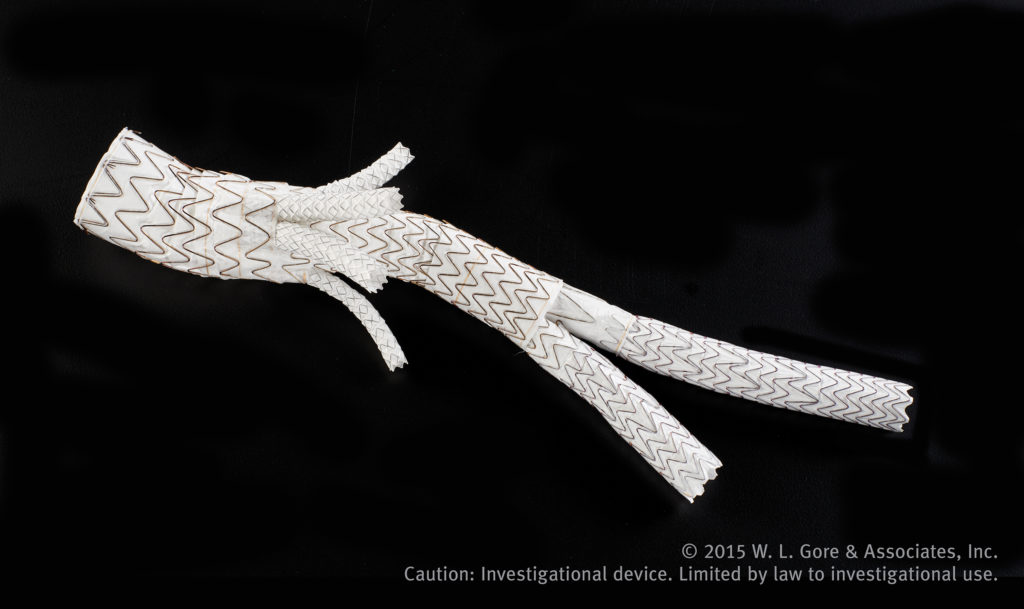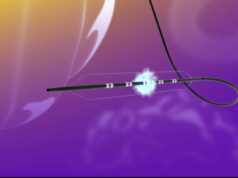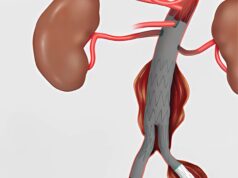
Enrolment into Gore’s early feasibility study evaluating the Excluder thoracoabdominal branch endoprosthesis (TAMBE) for the treatment of aortic aneurysms involving the visceral branch vessels has now been completed. The TAMBE is designed to be the first complete off-the-shelf solution for the treatment of this complex disease.
A Gore press release says that US physicians treating patients with aneurysms involving the visceral segment “have limited options”. The open surgical procedure is complex and is associated with a high rate of mortality and morbidity. Furthermore, those who would prefer a minimally invasive approach are currently limited to a combination of products not designed for this purpose, or must wait for a custom-built device, when and if the patient’s anatomy qualifies them for this option.
“The early feasibility study included two configurations of the TAMBE device,” said Michel Makaroun, chief of the Division of Vascular Surgery at the University of Pittsburgh School of Medicine and national principal investigator of the study. “In addition to the original retrograde renal branch configuration, a new antegrade configuration allowing all of the branches to be delivered from the patient’s arm was evaluated.”
The antegrade configuration also features a shorter device length to optimise the fit of this design across the largest set of patient anatomies. The all-in-one system has four pre-cannulated portals for the placement of the stent-graft branches in the visceral branch vessels. Additionally, the antegrade version maintains an intuitive staged delivery system intended to provide physicians the ability to reposition the graft and aid in the selective catheterisation of the branches throughout the deployment process.
“Building a custom device can add a lengthy delay to time-sensitive treatments. An off-the-shelf solution from Gore makes sense as the company’s products have been designed specifically to work together to solve complex medical challenges,” said Mark Farber, a vascular surgeon (aortic specialist) in Chapel Hill, USA, and participant in the study. “This enhancement to the original Excluder thoracoabdominal device will help bring a minimally invasive option to the greatest number of eligible patients while reducing the complexity of the procedure.”
In 2013, the FDA released guidance regarding early feasibility studies, which offers a relatively new pathway to facilitate providing patients with access to safe, effective new technologies of significant importance. As cited in the guidance, the pathway enables “early clinical evaluation of devices to provide proof of principle and initial clinical safety data.” The device’s early feasibility study has now enrolled the required 10 subjects, with more than half of these implanted with the latest generation of the device. This study follows an ongoing clinical study that began in Brazil in 2014.












